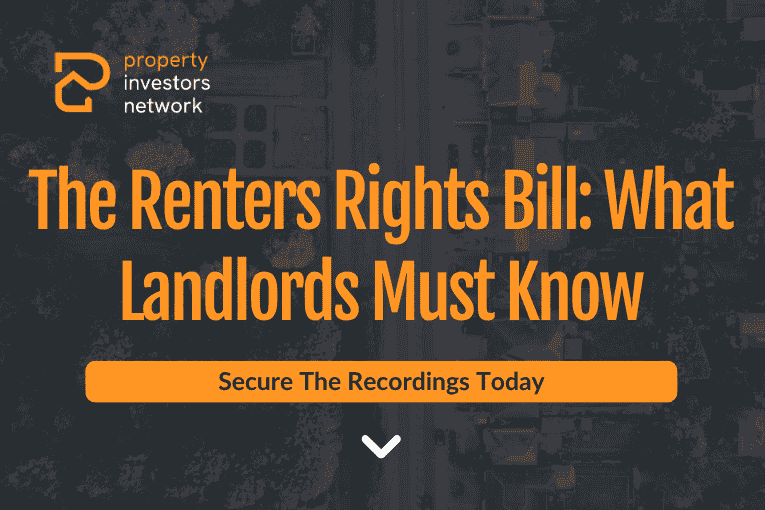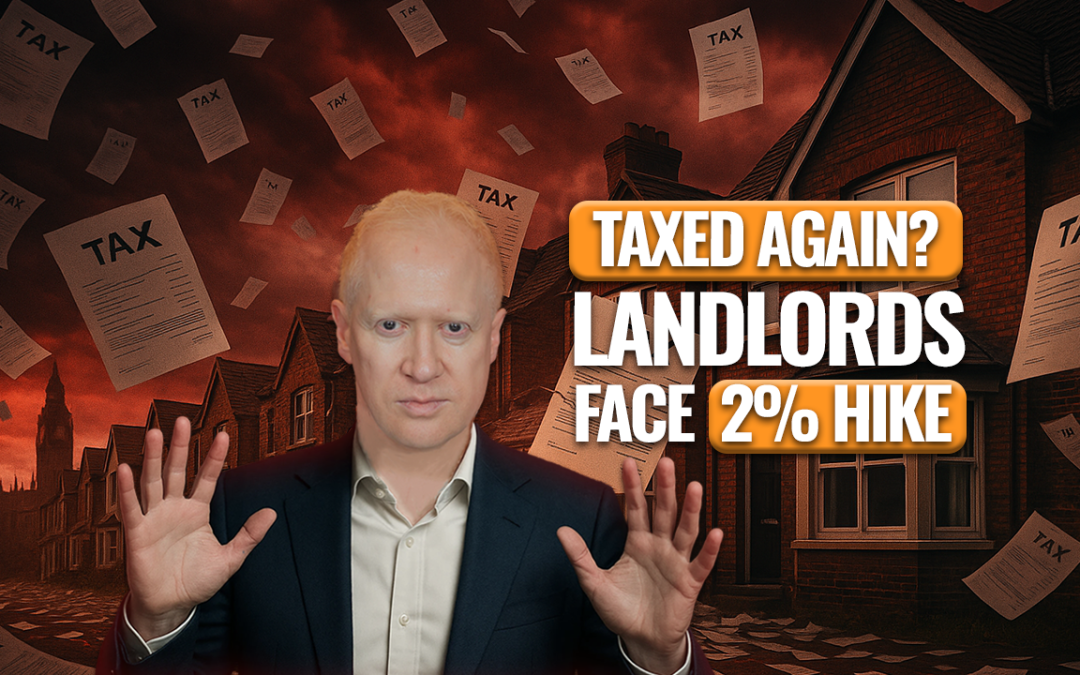Introduction: Big changes ahead for landlords
The Renters Rights Bill 2026 is set to bring some of the most significant renters rights bill changes the UK property market has ever seen. With the section 21 ban confirmed and new rules around landlord compliance already on the horizon, every landlord and investor needs to know how to prepare for the Renters Rights Bill before it becomes law. This reform will reshape how you manage tenants, register your properties, and stay compliant as a landlord, so taking action now is essential if you want to protect your income and future investments.
While the full rollout isn’t expected until April 2026, preparation starts now. Therefore, the next year will be crucial for getting your portfolio, agents, and processes ready.
In this blog, I’ll break down the key Renters Rights Bill changes, explain what they mean in practice, and show you how to prepare for the Renters Rights Bill before it comes into force.
1. When will the Renters Rights Bill 2026 take effect?
Although the government hasn’t yet confirmed the official commencement date, most experts expect the new law to start from 6 April 2026.
In other words, landlords have roughly a year and a half to get ready for major changes to how properties are registered, how tenants are managed, and how possession is handled.
The government will launch a new national landlord database alongside the bill, creating a central hub where every landlord must list their properties. You’ll have 28 days from the portal launch to get your details uploaded.
2. The biggest Renters Rights Bill changes for landlords
The Bill will reshape how the private rental sector operates. Here’s what’s coming:
A national landlord and property database
Every rental property will need to be registered on a national database.
Each property will get a unique reference number, allowing tenants to check whether their home is correctly listed.
Additionally, this move aims to increase transparency and help councils enforce standards more effectively. Landlords must regularly update their contact details and property records to stay compliant.
Action point: Start preparing your property and compliance documentation now, ready for quick upload once the system opens.
Getting these systems in place early will make landlord compliance much easier when the new registration requirements are introduced.
Mandatory landlord redress scheme
All landlords, including those who self-manage, will be legally required to join a redress scheme or ombudsman.
If you operate through multiple limited companies, each company will need its own registration.
This change gives landlords and tenants an extra way to resolve complaints without going to court.
Stronger enforcement and penalties
The Renters Rights Bill 2026 gives councils and tribunals greater power to enforce compliance.
Councils can issue Rent Repayment Orders of up to two years’ rent to landlords who fail to register or meet their obligations.
As a result, ignoring these requirements could cost thousands in repayments or penalties.
Staying on top of these new requirements is key to maintaining landlord compliance, as councils will be monitoring registration and documentation more closely than ever.
The Section 21 ban
One of the most high-profile Renters Rights Bill changes is the abolition of Section 21 no-fault evictions.
This means landlords will no longer be able to ask tenants to leave without a valid reason.
Instead, all possession cases will have to rely on Section 8 grounds, such as rent arrears or property sale.
However, while the government intends this change to improve tenant security, court delays remain a major challenge. The system is already under strain, with too few judges and long waiting times. If court resources aren’t increased, regaining possession could take significantly longer.
Upfront rent and guarantor rules
Landlords will no longer be able to require several months of rent in advance.
You’ll only be allowed to request one month upfront, unless the tenant voluntarily offers to pay more.
In practice, agents can accept voluntary upfront payments into a client account, then release the funds to landlords each month.
This change makes strong guarantor policies even more important. Ideally, use guarantors who own property, or allow tenants to use third-party guarantor services.
Property standards and EPC upgrades
The new law reinforces the requirement that all rented homes must be safe and fit to let, with no Category 1 hazards present.
By 2033, the target for all rented homes is an EPC rating of C.
Some landlords may sell older or harder-to-upgrade properties, but most can reach EPC C by installing LED lighting, upgrading boilers, and improving insulation.
The government offers grants to help landlords with low-income tenants fund necessary improvements.
Meeting these new standards will form a central part of landlord compliance, especially for properties with older EPC ratings.
3. How to prepare for the Renters Rights Bill 2026
The key to surviving and thriving under the new rules is preparation. Here’s how to get ready now:
Step 1: Talk to your letting agent
Ask them:
-
What steps are you taking to prepare for the Renters Rights Bill?
-
How will you ensure my properties are registered within 28 days?
-
Are you ready for the Section 21 ban?
-
How will you manage voluntary upfront payments correctly?
-
What’s your guarantor policy?
If they can’t answer confidently, it’s time to find a more proactive agent. Remember, you’re ultimately responsible for compliance.
If you want to stay up to date on changes like this and connect with other landlords already preparing for landlord compliance, consider attending your nearest property investors network (pin) meeting to hear the latest guidance and practical tips.
Step 2: Create your property compliance pack
Prepare a simple digital folder for each property with:
-
Ownership details and company structure
-
Gas, electrical, and EPC certificates
-
Tenancy agreements and deposit info
-
Safety checks and repair logs
Having these ready will make database registration quick and painless.
Step 3: Join a landlord redress scheme
Research which redress provider best suits your setup, and register early.
If you hold properties in multiple SPVs, ensure each entity has its own membership.
Step 4: Tighten your tenant screening
Update your referencing criteria and require strong guarantors.
For tenants without one, explore rent guarantor services they can pay for.
Step 4: Tighten your tenant screening
Update your referencing criteria and require strong guarantors.
For tenants without one, explore rent guarantor services they can pay for.
Step 5: Plan for EPC and maintenance upgrades
Arrange EPC assessments now to identify cost-effective improvements.
Finally, start with small wins, budget for larger upgrades, and explore available grants.
4. What Happens If You Ignore the Renters Rights Bill 2026 Changes”
Failing to prepare for the Renters Rights Bill 2026 could be costly.
Here’s what’s at stake:
-
Rent Repayment Orders worth up to two years’ rent
-
Local authority fines for unregistered properties
-
Loss of possession control under the Section 21 ban
-
Legal delays and costs if you rely on unprepared agents
This is not legislation you can afford to ignore.
5. What this means for the property market
Many landlords are already considering exiting the market due to increased regulation and compliance costs.
However, fewer landlords means less rental supply, which could drive rents higher over the next few years.
For savvy investors, this environment creates opportunity, particularly where sellers are flexible on price or terms.
Those who adapt early will benefit from stronger portfolios and reduced risk.
Conclusion: Take action before 2026
The Renters Rights Bill 2026 will reshape the rental market with sweeping renters rights bill changes, from the section 21 ban to tougher landlord compliance requirements. If you haven’t yet learned how to prepare for the Renters Rights Bill, now’s the time.
To make it easier, we hosted a one-day training covering every change in detail and you can now watch the full recordings online.
Featuring expert insight from Simon Zutshi, Paul Shamplina, and Susie Crolla, this replay will show you how to protect your income, stay compliant, and adapt confidently to the Renters Rights Bill 2026.
About property investors network
Founded in 2003 by Simon Zutshi, property investors network (pin) is the UK’s longest-running and pioneering property training and networking organisation. We cater for all levels of investors from beginners learning how to start in property to experienced professionals looking to scale. With monthly property networking meetings across the UK, online workshops and hands-on coaching programmes, pin has supported thousands of people to build knowledge, confidence and profitable portfolios. Unlike estate agents or deal sellers, pin focuses purely on UK property training and education, providing a safe and inspiring community for anyone serious about property investing.











